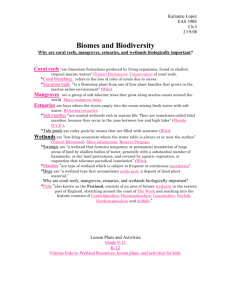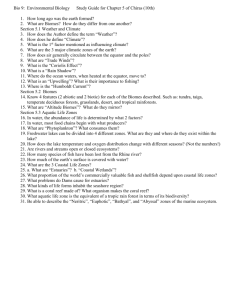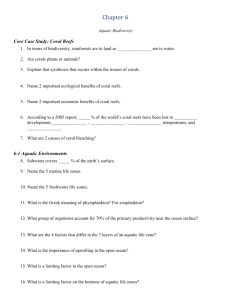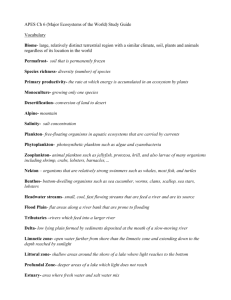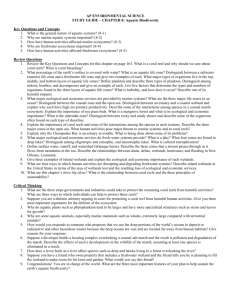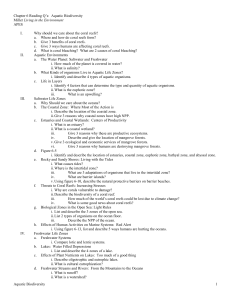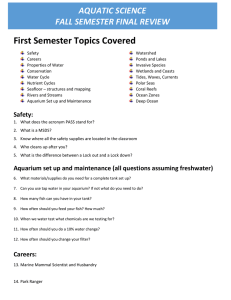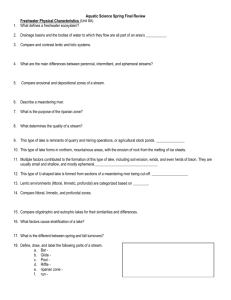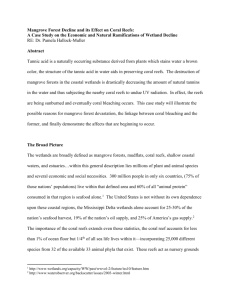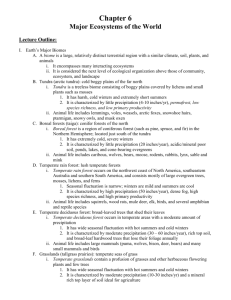Chapter 4: Global Climates and Biomes
advertisement
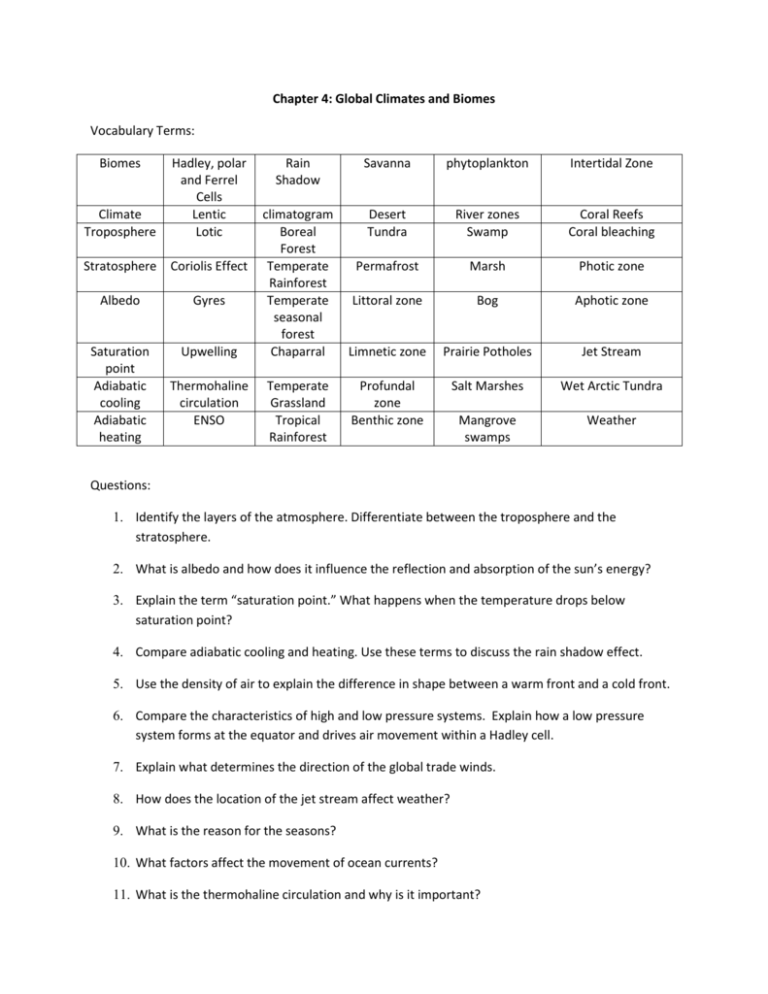
Chapter 4: Global Climates and Biomes Vocabulary Terms: Biomes Climate Troposphere Hadley, polar and Ferrel Cells Lentic Lotic Stratosphere Coriolis Effect Albedo Gyres Saturation point Adiabatic cooling Adiabatic heating Upwelling Thermohaline circulation ENSO Rain Shadow Savanna phytoplankton Intertidal Zone climatogram Boreal Forest Temperate Rainforest Temperate seasonal forest Chaparral Desert Tundra River zones Swamp Coral Reefs Coral bleaching Permafrost Marsh Photic zone Littoral zone Bog Aphotic zone Limnetic zone Prairie Potholes Jet Stream Profundal zone Benthic zone Salt Marshes Wet Arctic Tundra Mangrove swamps Weather Temperate Grassland Tropical Rainforest Questions: 1. Identify the layers of the atmosphere. Differentiate between the troposphere and the stratosphere. 2. What is albedo and how does it influence the reflection and absorption of the sun’s energy? 3. Explain the term “saturation point.” What happens when the temperature drops below saturation point? 4. Compare adiabatic cooling and heating. Use these terms to discuss the rain shadow effect. 5. Use the density of air to explain the difference in shape between a warm front and a cold front. 6. Compare the characteristics of high and low pressure systems. Explain how a low pressure system forms at the equator and drives air movement within a Hadley cell. 7. Explain what determines the direction of the global trade winds. 8. How does the location of the jet stream affect weather? 9. What is the reason for the seasons? 10. What factors affect the movement of ocean currents? 11. What is the thermohaline circulation and why is it important? 12. Explain what events lead to an ENSO and a La Nina. What are the problems and effects caused by El Nino and La Nina? 13. For each of the biomes, locate major global areas where the biome can be found. Discuss the plant and animal life in each biome. 14. Identify each of the 4 zones of a lake and provide the information about the DO, nutrient levels, and sunlight in each zone. 15. Explain lake turnover. 16. Identify the three zones of a river and discuss the DO, nutrient levels and other characteristics indicative of each zone. 17. Identify and describe the different types of inland wetlands. 18. What is a mangrove forest? 19. Discuss the ecosystem services provided by wetlands. How have humans impacted wetlands? What are we doing to protect the wetlands? 20. How is salinity affected daily and seasonally in an estuary? 21. Identify the two organisms that make up coral. Why is a coral reef an important ecosystem? What conditions do coral reefs need to survive? How have humans impacted coral reefs? 22. Compare inland and coastal wetlands. How they are similar, how are they different? 23. Identify the zones of the ocean, describing the characteristics of each zone.


